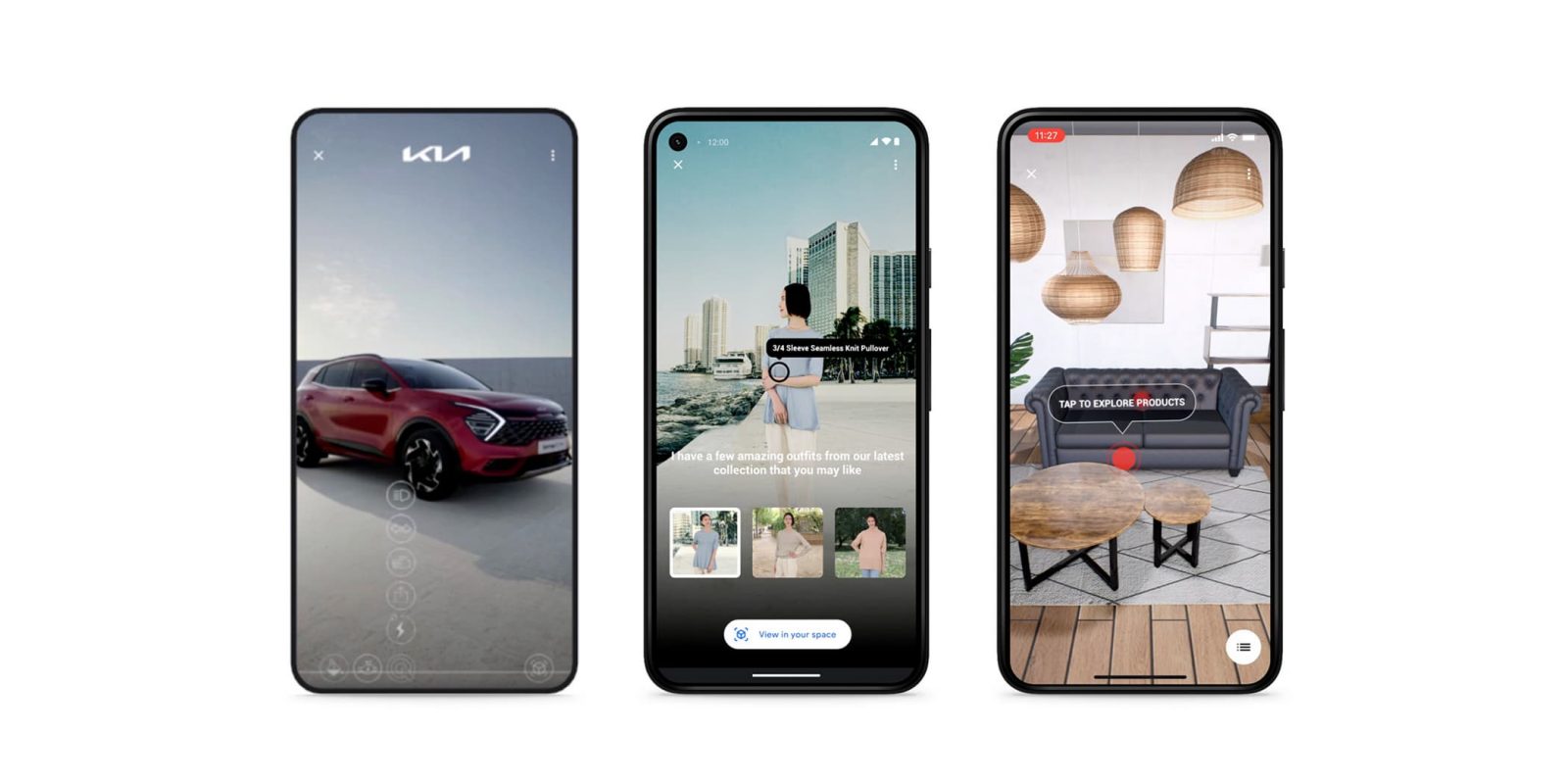
Last May, Google Cloud announced Immersive Stream for XR to use cloud-based GPUs (like Stadia) for interactive 3D and augmented reality experiences, like product demos, and it’s now generally available.
Google Cloud GPUs are used to “host, render, and stream high-quality photorealistic experiences” without users needing “powerful hardware or a special application to be immersed in a 3D or AR world.”
Phones were the initial use case, but Google has since added the ability to render content in landscape mode for desktop and tablet viewing. The additional screen real estate will allow for more “sophisticated UIs and interactions.” As part of this, Immersive Stream for XR content can be embedded into websites you own “using an HTML iframe, allowing users to access your immersive applications without leaving your domain.”
Lastly, Immersive Stream for XR now supports Unreal Engine 5.0.
Just yesterday, Google announced that Immersive View in Google Maps, which uses this streaming tech, is rolling out in London, Los Angeles, New York, San Francisco and Tokyo. It’s coming to Amsterdam, Dublin, Florence, and Venice over the next few months. You can access it from listings in Google Maps, and the company imagines it as being useful for getting some perspective on a location before visiting.
Say you’re planning a visit to the Rijksmuseum in Amsterdam. You can virtually soar over the building and see where things like the entrances are. With the time slider, you can see what the area looks like at different times of day and what the weather will be like. You can also spot where it tends to be most crowded so you can have all the information you need to decide where and when to go. If you’re hungry, glide down to the street level to explore nearby restaurants — and even take a look inside to quickly understand the vibe of a spot before you book your reservation.
Other commercial uses of Immersive Stream for XR include:
- “…place furniture in either a virtual living room or in their own space using AR. Users have the ability to customize the item’s color and options, then add products to their shopping cart once satisfied.”
- “…automakers, who can now enable prospective buyers to browse and customize new vehicles in photo realistic detail and visualize them in their own driveway.”
- “For example, Virtual Worlds uses photogrammetry techniques to capture historical sites, polish them with a team of designers, and then create interactive experiences on top.”
FTC: We use income earning auto affiliate links. More.





Comments